Rubbish Clearance in Commercial Waste Collection
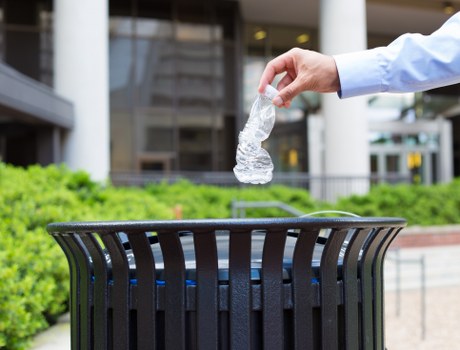
Understanding Rubbish Clearance in the Commercial Sector
Rubbish clearance plays a pivotal role in **commercial waste collection**, ensuring that businesses maintain a clean and efficient environment. Proper waste management not only enhances the aesthetic appeal of a commercial space but also contributes to a healthier workplace and a more sustainable planet.
In the competitive landscape of commercial operations, efficient rubbish clearance can distinguish a business from its competitors. It demonstrates responsibility towards the environment and showcases a commitment to employee well-being. Moreover, effective waste management can lead to cost savings, as businesses can reduce disposal fees and potentially benefit from recycling initiatives.
Understanding the nuances of commercial waste collection is essential for businesses aiming to optimize their operations. This involves selecting the right rubbish clearance services, understanding waste categorization, and implementing best practices for waste reduction.
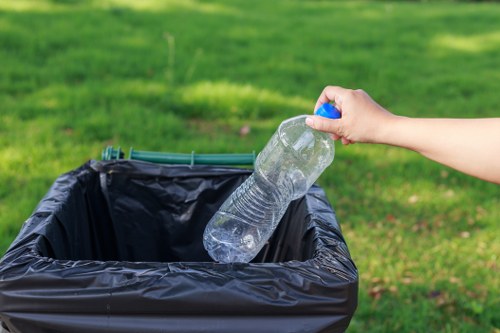
The Importance of Professional Rubbish Clearance
Professional rubbish clearance services offer expertise and efficiency that is hard to match with in-house solutions. These services come equipped with the necessary tools and knowledge to handle various types of commercial waste, ensuring compliance with local regulations and environmental standards.
One of the key benefits of hiring professional rubbish clearance is **time savings**. Businesses can focus on their core operations without the distraction of managing waste. Additionally, professional services often provide regular collection schedules, ensuring that waste is managed consistently and reliably.
Environmental responsibility is another crucial aspect. Professional rubbish clearance companies are well-versed in recycling and waste diversion strategies, helping businesses minimize their environmental footprint. By partnering with experts, companies can ensure that their waste is disposed of responsibly, reducing the impact on the environment.
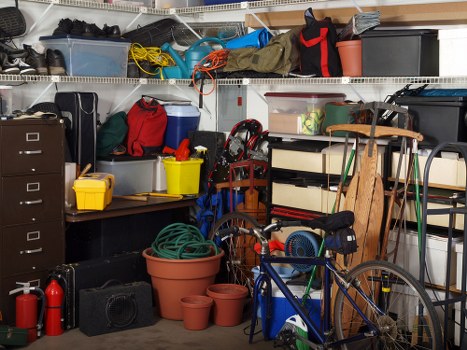
Types of Commercial Waste
Commercial waste encompasses a wide range of materials, each requiring specific handling and disposal methods. Understanding the types of waste generated is the first step in effective rubbish clearance.
1. **General Waste**
General waste includes everyday items such as packaging materials, office supplies, and food waste. These materials typically go to landfill sites unless they can be recycled.
2. **Recyclable Waste
Recyclable waste consists of materials like paper, cardboard, plastics, glass, and metals. Proper segregation at the source is essential to maximize recycling efforts and reduce the amount of waste sent to landfills.
3. **Hazardous Waste
Hazardous waste includes substances that are flammable, corrosive, toxic, or reactive, such as chemicals, batteries, and electronic waste. Special handling and disposal procedures are required to manage hazardous waste safely and in compliance with regulations.
4. **Electronic Waste (E-Waste)
E-waste comprises discarded electronic devices like computers, printers, and mobile phones. Due to the presence of hazardous materials and valuable components, proper e-waste recycling is crucial.
5. **Construction and Demolition Waste
This type of waste is generated from building and demolition activities, including materials like concrete, wood, metals, and drywall. Effective management can facilitate recycling and reuse of construction materials.
6. **Organic Waste
Organic waste includes biodegradable materials such as food scraps and garden waste. Composting is an effective method for managing organic waste, turning it into valuable fertilizer.
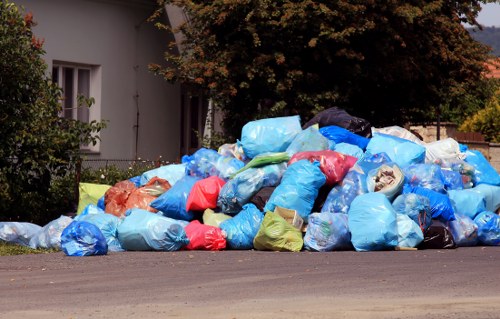
Best Practices for Effective Rubbish Clearance
Implementing best practices in rubbish clearance can significantly enhance the efficiency and sustainability of commercial waste management.
1. **Waste Audits and Assessments
Conducting regular waste audits helps businesses understand the volume and types of waste generated. This information is essential for designing effective waste management strategies.
2. **Segregation at Source
Proper waste segregation at the source ensures that recyclable and hazardous materials are handled appropriately. Providing clearly labeled bins and educating employees on segregation practices are key steps.
3. **Choosing the Right Rubbish Clearance Partner
Selecting a reliable rubbish clearance service that offers customized solutions based on your business needs is crucial. Look for companies with a strong track record in sustainability and compliance.
4. **Recycling and Reuse Initiatives
Implementing recycling programs and encouraging the reuse of materials can significantly reduce waste output. Partnering with recycling facilities ensures that materials are processed efficiently.
5. **Minimizing Waste Generation
Adopting strategies to minimize waste generation, such as digital documentation and energy-efficient practices, contributes to sustainable business operations.
6. **Regular Training and Education
Educating employees about the importance of waste management and providing training on best practices fosters a culture of sustainability within the organization.
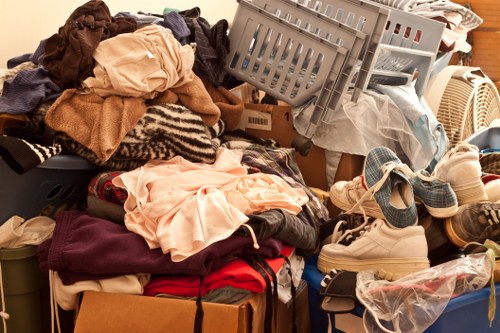
Technological Innovations in Commercial Waste Collection
Technology plays a significant role in enhancing the efficiency and effectiveness of rubbish clearance in the commercial sector. Innovations are transforming how businesses manage waste, making the process more streamlined and environmentally friendly.
1. **Smart Waste Management Systems
Smart waste management systems utilize sensors and IoT technology to monitor waste levels in real-time. These systems optimize collection schedules, reducing unnecessary pickups and ensuring timely waste disposal.
2. **Automated Sorting Facilities
Automated sorting facilities use advanced machinery and artificial intelligence to categorize waste accurately. This technology improves the efficiency of recycling processes and ensures higher purity of recycled materials.
3. **Waste Tracking Software
Waste tracking software helps businesses monitor their waste generation and disposal patterns. This data-driven approach enables companies to make informed decisions about waste reduction and sustainability initiatives.
4. **Electric and Hybrid Waste Collection Vehicles
The use of electric and hybrid vehicles for waste collection reduces carbon emissions and operational costs. These eco-friendly vehicles contribute to a greener footprint for businesses and waste management companies alike.
5. **Recycling Robots
Recycling robots are being deployed to sort and process recyclable materials with greater speed and accuracy. These robots enhance the capacity of recycling facilities and reduce the reliance on manual labor.
6. **Blockchain for Waste Management
Blockchain technology can be used to create transparent and immutable records of waste transactions. This ensures accountability and traceability in the waste management process, enhancing trust among stakeholders.
Environmental and Economic Benefits of Effective Rubbish Clearance
Effective rubbish clearance in commercial waste collection offers numerous environmental and economic benefits that are crucial for sustainable business operations.
Environmental Benefits:
- Reduction in Landfill Use: Efficient waste management reduces the volume of waste sent to landfills, decreasing land and resource consumption.
- Resource Conservation: Recycling and reuse initiatives conserve natural resources by repurposing materials.
- Lower Carbon Footprint: Sustainable waste practices reduce greenhouse gas emissions associated with waste processing and transportation.
- Pollution Prevention: Proper disposal of hazardous waste prevents soil and water contamination.
Economic Benefits:
- Cost Savings: Effective waste management can lower disposal fees and generate revenue through recycling.
- Operational Efficiency: Streamlined waste processes enhance overall operational efficiency and productivity.
- Reputation Enhancement: Demonstrating environmental responsibility can improve a company's reputation and attract eco-conscious clients.
- Regulatory Compliance: Adhering to waste management regulations avoids fines and legal issues.
Challenges in Commercial Rubbish Clearance
Despite the clear benefits, businesses may encounter several challenges in managing commercial rubbish clearance effectively.
1. **Regulatory Compliance
Staying compliant with ever-evolving waste management regulations can be complex. Non-compliance can result in hefty fines and damage to a company's reputation.
2. **Cost Management
Balancing the costs of waste management services with budget constraints is a common challenge. Businesses must find cost-effective solutions without compromising on quality.
3. **Waste Segregation
Ensuring proper segregation of waste at the source requires consistent effort and employee training. Inadequate segregation can lead to contamination and increased disposal costs.
4. **Space Constraints
Limited space in commercial premises can make storing and managing waste a logistical challenge. Efficient waste storage solutions are necessary to maximize space usage.
5. **Employee Engagement
Engaging employees in waste management practices is essential for success. Lack of participation can hinder waste reduction efforts and impact overall effectiveness.
6. **Technological Integration
Integrating new technologies into existing waste management systems can be daunting. Businesses must invest in training and infrastructure to leverage technological advancements effectively.
Future Trends in Commercial Waste Collection
The landscape of commercial waste collection is continually evolving, driven by technological advancements and increasing environmental awareness.
1. **Circular Economy Models
Adopting circular economy principles focuses on minimizing waste through reuse, repair, and recycling, creating a sustainable loop of resource usage.
2. **Advanced Recycling Techniques
Innovations in recycling technology are making it possible to process more types of materials efficiently, enhancing the viability of recycling programs.
3. **Zero Waste Initiatives
Many businesses are setting goals to achieve zero waste by implementing comprehensive waste reduction and management strategies.
4. **Artificial Intelligence and Machine Learning
AI and machine learning are being used to optimize waste collection routes, improve sorting accuracy, and predict waste generation trends.
5. **Sustainable Packaging Solutions
Businesses are increasingly adopting sustainable packaging to reduce waste and encourage recycling among consumers.
6. **Community Engagement and Partnerships
Collaborating with local communities and other stakeholders enhances the effectiveness of waste management initiatives and fosters a collective approach to sustainability.
Choosing the Right Rubbish Clearance Service
Selecting the appropriate rubbish clearance service is crucial for effective commercial waste management. Here are key factors to consider:
1. **Service Range
Ensure the service provider offers a comprehensive range of services tailored to your business needs, including recycling, hazardous waste management, and regular pickups.
2. **Reputation and Reliability
Choose a provider with a solid reputation for reliability and customer satisfaction. Check reviews and ask for references to gauge their performance.
3. **Compliance and Certifications
Verify that the service provider complies with local regulations and holds necessary certifications for handling specific types of waste.
4. **Sustainability Practices
Opt for companies committed to sustainable practices, such as high recycling rates and eco-friendly disposal methods.
5. **Pricing Structure
Understand the pricing structure and ensure it aligns with your budget. Look for transparent pricing without hidden fees.
6. **Customer Support
Responsive customer support is essential for addressing issues promptly and ensuring smooth operations.
7. **Flexibility and Customization
The ability to customize services based on your unique requirements can enhance efficiency and effectiveness.
Implementing an Effective Waste Management Plan
Developing a robust waste management plan is essential for commercial spaces aiming to optimize rubbish clearance.
1. **Assessing Waste Generation
Begin by assessing the types and volumes of waste your business generates. This assessment informs the selection of appropriate rubbish clearance strategies.
2. **Setting Clear Goals
Establish clear, achievable goals for waste reduction, recycling rates, and overall waste management. Clear objectives guide the implementation process.
3. **Designing Waste Segregation Systems
Implement effective waste segregation systems with clearly labeled bins and designated areas for different types of waste.
4. **Engaging Employees
Promote employee involvement through training programs, awareness campaigns, and incentives for adhering to waste management practices.
5. **Monitoring and Evaluation
Regularly monitor waste generation and disposal activities. Evaluate the effectiveness of your waste management plan and make necessary adjustments.
6. **Leveraging Technology
Integrate technology solutions such as smart waste bins, waste tracking software, and automated collection systems to enhance efficiency.
7. **Partnering with Experts
Collaborate with professional rubbish clearance services to leverage their expertise and resources for effective waste management.
Case Studies: Successful Commercial Waste Clearance
Examining real-world examples of successful commercial rubbish clearance can provide valuable insights and inspiration.
1. **Tech Corporation Implements Zero Waste Goals
A leading tech company set ambitious zero waste goals by partnering with a professional rubbish clearance service. Through comprehensive recycling programs, employee training, and waste audits, they achieved a 95% waste diversion rate.
2. **Retail Chain Reduces Costs with Efficient Waste Management
A large retail chain streamlined its waste management by adopting smart waste bins and optimizing collection schedules. This approach not only reduced their waste disposal costs by 30% but also improved their sustainability profile.
3. **Hospital Enhances Hygiene and Safety with Professional Clearance
A hospital implemented strict rubbish clearance protocols by hiring a specialized waste management service. This ensured the safe disposal of medical and hazardous waste, enhancing overall hygiene and safety standards.
4. **Office Complex Achieves High Recycling Rates
An office complex partnered with a local rubbish clearance company to establish effective recycling stations and educate employees. Their efforts led to a significant increase in recycling rates and a reduction in general waste.
5. **Manufacturing Plant Optimizes Waste Stream
A manufacturing plant conducted a waste audit and collaborated with a rubbish clearance service to segregate and recycle materials. This resulted in reduced waste processing costs and enhanced environmental compliance.
Conclusion
Rubbish clearance is a fundamental component of commercial waste collection, playing a critical role in maintaining clean, efficient, and sustainable business environments. By understanding the types of commercial waste, implementing best practices, leveraging technological innovations, and partnering with reliable rubbish clearance services, businesses can effectively manage their waste, reduce costs, and contribute positively to the environment.
As environmental regulations become more stringent and sustainability becomes a key differentiator, investing in effective rubbish clearance strategies is no longer optional but essential. Businesses that prioritize waste management will not only reap economic benefits but also foster a culture of responsibility and sustainability that resonates with employees, customers, and the broader community.
Contact us today to discover how our professional rubbish clearance services can help your business achieve its waste management goals and contribute to a greener future.